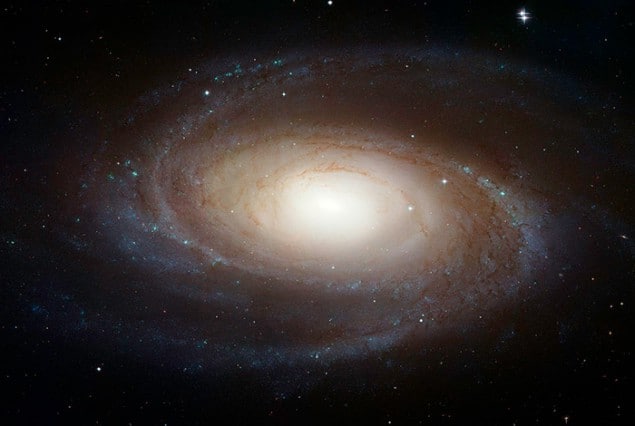Flash Physics is our daily pick of the latest need-to-know developments from the global physics community selected by Physics World‘s team of editors and reporters

Modified MOND could explain galaxy densities
The density of ordinary matter in rotating disc galaxies can be explained without the need of dark matter, according to Mordehai Milgrom of the Weizmann Institute in Israel. The observed rate at which galaxies rotate is much greater than expected if only the gravitational pull of ordinary visible matter were holding them together. The extra gravitational glue provided by invisible dark matter is the conventional explanation for this discrepancy. However, in 1983 Milgrom proposed modified Newtonian dynamics (MOND) as an alternative explanation that eschews dark-matter altogether. Instead, MOND modifies Newtonian mechanics such that fast-moving stars in the outer regions of a rotating galaxy experience a greater gravitational tug than slower-moving stars in inner regions. Writing in Physical Review Letters, Milgrom has derived a new modified version of MOND that tries to explain the recent discovery of a strong relationship between the density of visible matter in disc galaxies and the density of matter required to keep the galaxies together. Milgrom says this modified version of MOND “agrees very well” with galaxy-density data and he points out that dark-matter theories cannot explain the density relationship.
US fusion boss steps down

Stewart Prager, the head of the Princeton Plasma Physics Laboratory (PPPL) in New Jersey, has stepped down after eight years in the lab. Prager is the sixth director of the PPPL and joined the lab in late 2008 after a long career at the University of Wisconsin. The PPPL is operated by Princeton University and the lab operates the National Spherical Torus Experiment, which recently completed a $94m upgrade. However, the facility recently encountered a problem when a magnetic coil failed last month, which could knock it out of action for a year. Prager will now continue research in fusion energy and plasma physics at the PPPL after taking a year’s sabbatical.
University faces $115,500 fine for lab explosion

The University of Hawaii has been fined $115,500 (£88,500) to address safety failures that led to an explosion on 16 March at the university’s Manoa campus. The incident happened when postdoc Thea Ekins-Coward was mixing different gases at the Hawaii Natural Energy Institute. A static discharge caused an explosion that led to Ekins-Coward losing an arm as well as almost $1m in damages to the lab. The Hawaii Occupational Safety and Health (HIOSH) agency has now cited the university for 15 “serious” safety violations, including a lack of personal protective equipment and a failure to ensure that safety practices were followed. The university is now requesting an “informal conference” with HIOSH to “clarify the citations and discuss adjustments of the citations”.
- You can find all our daily Flash Physics posts in the website’s news section, as well as on Twitter and Facebook using #FlashPhysics. Tune in to physicsworld.com later today to read today’s extensive news story on an open-access publisher being accused of misrepresenting it journals.



